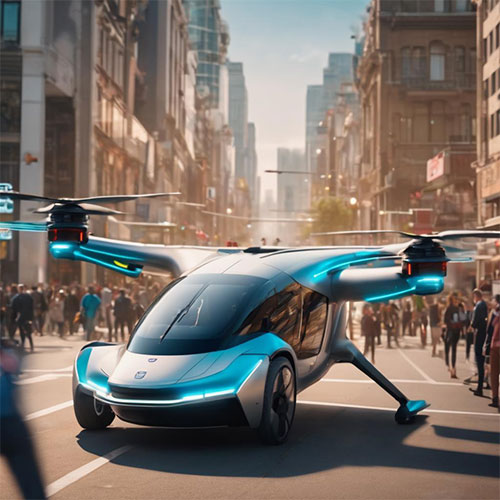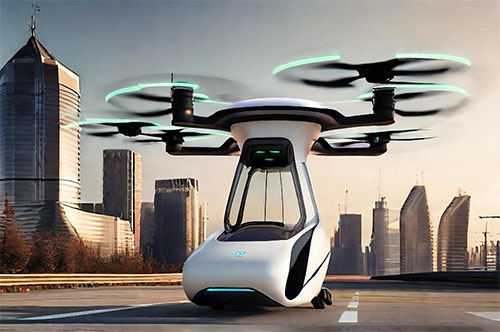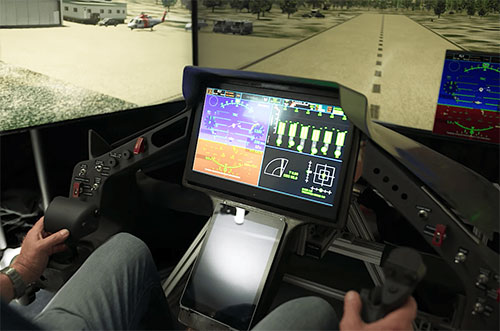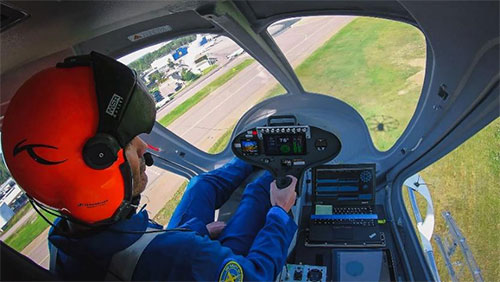
As with most business activities, the 2000lb (907.185kg) elephant in the room is the government.
The government has three major impacts across multiple markets in different ways.
These impacts are unique to eVTOL as they are new and unique products. As such they require new regulatory approaches in product certification, operation and pilot licensing. Aircraft that are certified under existing airworthiness regulations (part 23 or part 27) can use existing regulations and avoid almost all compliance risks.
Product Certification
Every aircraft must be qualified to a set of product-related regulations that define the design details, reliability and standards of safety that must be inherent in the design of the aircraft.
For eVTOL, these standards are completely new. Not only are they completely new, but they are different across different jurisdictions. In Europe, there is a different set of standards to the standards used in North America. This causes significant difficulties for products developed in Europe gaining exports to North America and products developed in North America gaining exports to Europe.
This is unlike existing regulations for fixed-wing and rotary-wing aircraft which are almost completely harmonized across all jurisdictions across the world. eVTOL regulations are new and unharmonized.
Using existing and time-tested regulations also removes the safety risk of immature regulations. The current regulations have been reformed over time, through repeated updates and amendments spurred by repeated incidents and tragedies. With a completely new set of regulatory standards, these incidents and tragedies have yet to occur, but they inevitably will.
The higher safety risk of using an immature set of regulations will be reflected in a higher incident rate and a higher insurance cost.
Another effect of using new sets of regulations is the eVTOL developers must develop new methods of compliance for these new regulations. This.is very time-consuming and very expensive. It can be seen from the difference in the projected time to market and the actual time to market of almost all eVTOL programs. This effect on schedule and budget has been consistently underestimated by eVTOL developers.
For example, Joby started their program in 2009. It was only in the last year (2022) that they achieved approval for their first compliance plan, the official description of their means of compliance. Having an approved compliance plan means that you can start your compliance activities. 2009-2022, 13 years is a long time to get to an approved compliance plan. This is reflected in the amount of money ($2bn USD) that Joby has raised to get to this stage of their program.
When a program completes a part of its demonstration of compliance, it then must find someone at the regulator or an individual with delegated responsibility, who will sign off on a finding of compliance against a completely new set of regulations via a completely new means of compliance. This will be a challenge. eVTOL OEMs may have discarded risk aversion, but the regulator and delegated individuals will be less accepting of risk.
Achieving eVTOL-type certification has proven to be and will continue to be excessively time-consuming and expensive.
Operational Certification
Once a company completes the product certification process, they must put their aircraft into commercial or private operation. This involves complying with a set of operational standards. These standards are also new, or they are adapted from existing standards for conventional aircraft operation.
eVTOL operational standards like product certification standards are not harmonized across international jurisdictions. The FAA in America and EASA in Europe have developed different operational standards for these types of vehicles. Some aspects of the design of the vehicle are driven by compliance with the operational standards. Because of this, intrinsic aspects of the vehicles may create a barrier to export between two major markets. Designs will require significant changes and re-certification to achieve export sales and foreign operations.
1 https://en.wikipedia.org/wiki/Joby_Aviation
2 https://www.jobyaviation.com/news/joby-completes-submission-stage-three-certification-plans/
3 https://www.crunchbase.com/organization/joby-aviation/company_financials
A further problem created by operational certification is any regulator may decide that a very conservative approach is required. For example, the FAA has taken the reserve requirements from part 29 large rotorcraft of forty-five minutes for IFR (Instrument Flight Rules) operation and applied that reserve requirement to what they call powered lift category aircraft, or eVTOL. Battery-driven aircraft have relatively low endurance and applying a very high reserve requirement to them will severely degrade commercial viability.

It is worth noting that the FAA operational regulations consist of over 137,000 words, while EASA has opted to consider UAVs and UAM in the same category and has issued an NPA that consists of over 118,000 words.
Every OEM who wants to sell their product in the North American and European markets will have to read, understand, compare, reconcile and demonstrate compliance with these hundreds of thousands of words of differing regulatory standards.
If designing a single vehicle to meet these two different sets of requirements is at all possible it is expensive and onerous. This places additional and unique demands on an aircraft type whose performance is already compromised by the immature technology and low energy density of the chosen energy storage medium.
Pilot Training and Availability
The status of pilot qualification has only recently beeen addressed by the regulators. Different eVTOL aircraft have different modes of operation, different flight control software systems creating different pilot feel and different pilot interfaces. In this context, pilot training and qualification is a non-trivial task.
Comparing the difference in pilot interfaces between leading eVTOL projects some of the problems can be seen.
There are two main layout types – ‘single seat two sticks’ and the ‘two seats one stick’.
4 https://www.federalregister.gov/d/2023-11497/p-1032
6 https://www.easa.europa.eu/en/document-library/notices-of-proposed-amendment/npa-2022-06
Joby type Cockpit, two control sticks, single cockpit seat – no space for pilot trainer in cockpit. Layout similar to Lilium, Vertical and Archer

Volocopter type Cockpit, single stick for the pilot’s right hand, space for pilot trainer in RH seat. The layout is similar to Ehang.

Both pilot interfaces are different to conventional fixed wing and helicopter controls, and they are different to each other.
This creates a problem of transferring pilot qualifications from conventional aircraft to eVTOL and between eVTOL types.
Each new pilot qualification for each new type of vehicle will need definition and international harmonization. It will take many years to reach international agreement on the standards and training requirements for private and commercial pilot licenses.
The cost of qualifying as a pilot able to fly commercial service is at least $50,000. The total projected number of eVTOL aircraft in service by 2030 by the OEMs is in the tens of thousands. (In contrast McKinsey estimates the total number in 2030 number to be 1000).
Taking the OEM figures and placing a cap of 10,000 aircraft in service by 2030 the total cost of pilot training will be $500,000,000.
A commercial pilot for existing aircraft types requires about 250 hours flying time. For 10,000 pilots this equates to 2.5M flying hours. If pilot training starts in 2025 and is split over 5 years up to 2030, this is an average of 2000 pilots and 500,000 flying hours per year. We can reasonably estimate that each training or personal aircraft is flown 4 hours per day and is operating 200 days per year. To train the required number of pilots over 5 years 625 eVTOL aircraft will have to be dedicated solely to that task.
There will have to be pilot training instructors, simulators and training facilities made available. There is no indication that the investment is being made at this time, or if investment will be made to support the eVTOL OEM timeline for the number of pilots necessary to support production projections.
Compliance Summary
Compared with an equivalent aircraft which is certified and operated under existing regulatory standards, an eVTOL aircraft faces an array of delays and problems.
It is not known if there is a route through type and operations certification that can result in a viable aircraft product.
The pilot qualification route is not defined and the infrastructure is not available to create the numbers of pilots necessary to allow commercial operation of eVTOL at a scale necessary to support OEM business models.
9 https://www.thrustflight.com/cost-to-become-pilot/, https://www.flaviationcenter.com/post/professional-pilot-how-much-does-it-really-cost-and-is-it-worth-it
10 https://www.linkedin.com/pulse/6000-midnight-evtol-aircraft-could-hit-skies-2030-daniel-bland/, https://verticalmag.com/news/archer-plots-a-data-driven-approach-to-flight-safety-from-the-c-suite-to-the-cockpit/

Comment On This Post